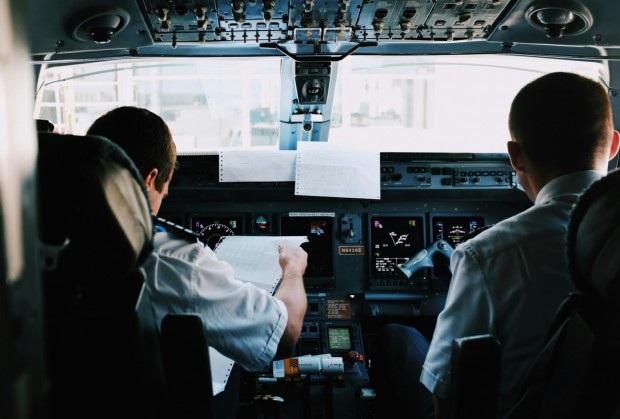In the United States, some big airlines like United and Southwest have recently stopped hiring pilots for a few months. This change is happening because these airlines are waiting on delayed new planes from Boeing. This hiring pause shows that while big airlines might not be facing pilot shortages anymore, smaller regional airlines still are.

(Photo : Blake Guidry on Unsplash)
Pilot Shortages Continue for Regional Airlines
The regional airlines, which operate flights for brands like American Eagle and United Express, still don't have enough captains to fly all their planes. Even though there are enough first officers, who are the pilots that assist the captains, these airlines are particularly short on captains. Captains need more experience, and there aren't enough of them ready to fly the smaller airlines' planes.
Travel Weekly revealed that last year and the year before, the bigger airlines hired around 13,000 pilots, much more than before the pandemic. They hired many from these smaller regional airlines, which has made the shortage of captains worse for these smaller lines.
Because the big airlines are not hiring right now, the regional ones might have a chance to catch up. They can try to hire more pilots and get their bigger planes back from storage to fly more often. If they manage to do this, it could help the big airlines, too. The more flights the regional carriers can provide, the more passengers they can send to the bigger airlines for longer flights.
However, looking ahead, experts are still worried about future pilot shortages. A company called Oliver Wyman thinks there will still be a shortage of pilots in North America for the next ten years. They believe that even though many new pilots are getting their licenses, there might not be enough because many current pilots will retire soon. This ongoing issue suggests that solving pilot shortages will be tough for both big and small airlines.
Related Article: IndiGo Airlines Pilots Benched After Collision with Air India Express
Pilot Shortages Intensify as U.S. Airlines and Unions Clash
In January, pilot shortages have given U.S. pilot unions strong bargaining power, leading to wage increases of up to 50% from airlines. These costs are likely to be passed on to passengers. This shortage came about after the Air Line Pilots Association (ALPA) influenced regulations to increase the minimum flight hours required for new pilots from 250 to 1500 after the 2009 Colgan Air crash.
This move was intended to improve safety but has limited the number of qualified pilots, contributing to current pilot shortages.
In response, airlines are looking for ways to manage higher labor costs and ongoing pilot shortages. Boeing and other companies are exploring more automated flight systems. These could potentially reduce the number of pilots needed on long flights by allowing one pilot to operate the plane during less busy times with the help of automation, Forbes stated.
Meanwhile, the rise in pilot pay is attracting more people to the profession, as it becomes a more financially appealing career. Flight schools are seeing higher enrollment, which may help alleviate the pilot shortages in the future. However, the debate continues on how best to balance pilot safety requirements with industry needs.
Read Also: Being A Pilot The Most Stressful Career This Year
This article is copyrighted by Travelers Today, the travel news leader



